Portland’s bridges are more than just functional structures; they are iconic symbols of the city’s beauty and ingenuity. From the majestic arches of the St. Johns Bridge to the modern lines of Tilikum Crossing, these architectural marvels connect not just places, but people and stories. Whether you’re driving over the soaring spans of the Fremont Bridge or strolling across the scenic pedestrian paths of the Hawthorne Bridge, each offers a unique perspective on Portland’s vibrant landscape. They stand as enduring landmarks, showcasing the city’s commitment to innovation and design. Join us as we explore the bridges that are integral to Portland’s identity and experience the breathtaking views they provide.
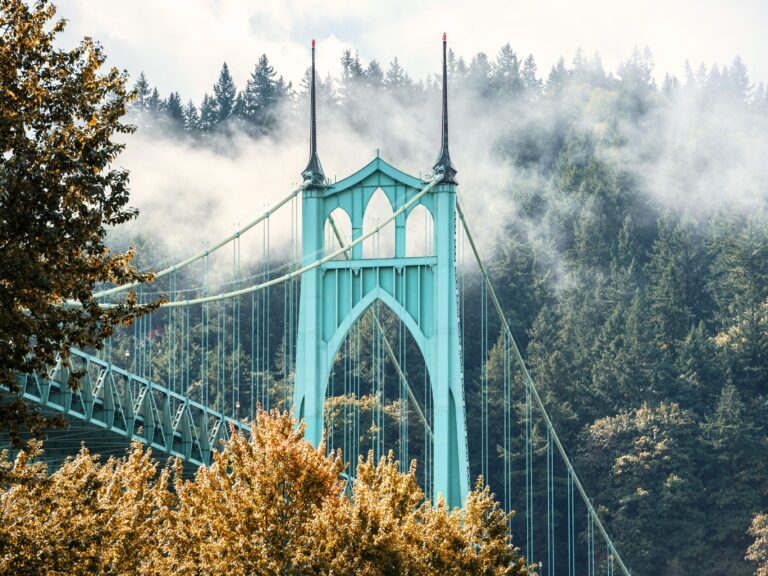
1. St. Johns Bridge
- Opened: 1931
- Type: Suspension bridge
- Neighborhoods/Areas Connected: St. Johns (North Portland) to Linnton (Northwest Portland)
- History:
- Designed by renowned engineer David B. Steinman, it features Gothic-style towers and was the longest suspension span west of Detroit at the time of its completion. The bridge was almost demolished in the 1970s due to concerns about its condition, but public outcry led to its preservation and restoration.
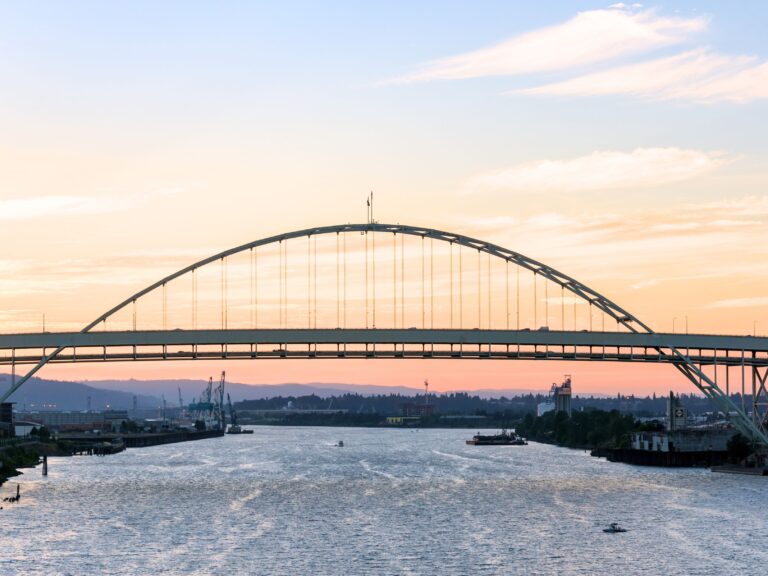
2. Fremont Bridge
- Opened: 1973
- Type: Tied-arch bridge
- Neighborhoods/Areas Connected: Northwest Portland to Northeast Portland
- History:
- The bridge has the longest main span in Oregon, measuring 1,255 feet. Named after explorer John C. Frémont, it serves as a critical segment of Interstate 405 and was designed to handle significant traffic volumes, reflecting the growing transportation needs of the city.
- The bridge has the longest main span in Oregon, measuring 1,255 feet. Named after explorer John C. Frémont, it serves as a critical segment of Interstate 405 and was designed to handle significant traffic volumes, reflecting the growing transportation needs of the city.
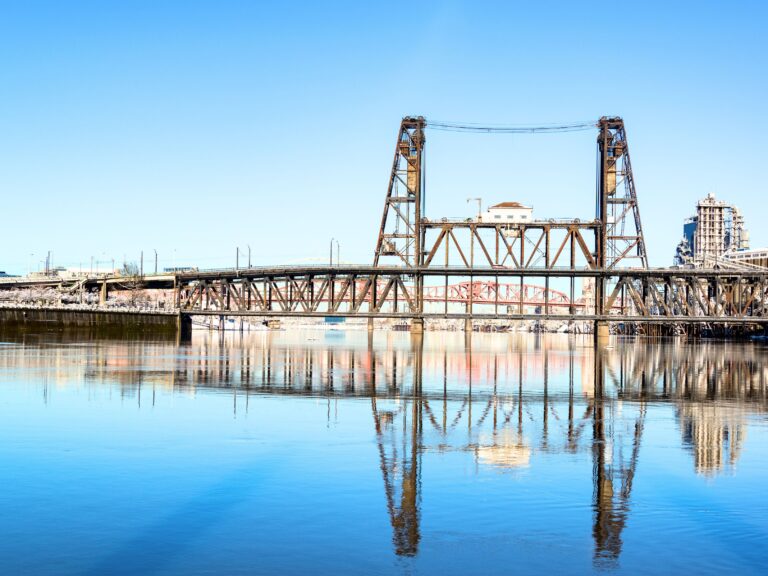
3. Steel Bridge
- Opened: 1912
- Type: Double-deck vertical-lift bridge
- Neighborhoods/Areas Connected: Old Town Chinatown (Downtown Portland) to Lloyd District (Northeast Portland)
- History:
- The Steel Bridge is unique with its independent lift spans for the lower and upper decks, allowing river traffic to pass without disturbing rail and vehicle traffic. This multi-modal bridge serves trains, cars, bicycles, and pedestrians, showcasing Portland’s commitment to diverse transportation options.
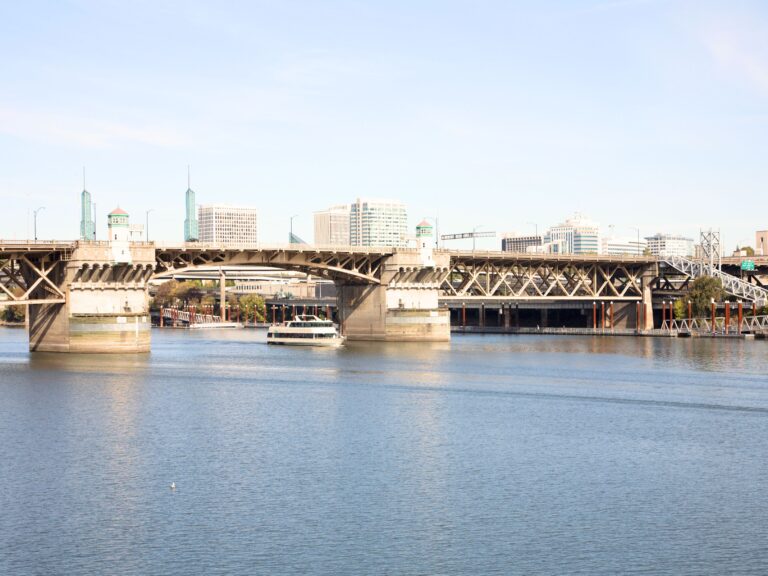
4. Burnside Bridge
- Opened: 1926
- Type: Bascule bridge
- Neighborhoods/Areas Connected: Downtown Portland to East Portland (Burnside Street)
- History:
- Replacing an older 1894 swing bridge, the Burnside Bridge is essential for east-west traffic flow. Named after Burnside Street and indirectly after General Ambrose Burnside, it features decorative railings and lampposts, contributing to its visual appeal.

5. Broadway Bridge
- Opened: 1913
- Type: Bascule bridge
- Neighborhoods/Areas Connected: Pearl District (Northwest Portland) to Rose Quarter (Northeast Portland)
- History:
- As Portland’s first bascule bridge, it was significant for its use of steel trusses and its ability to accommodate streetcars. The Broadway Bridge is painted in its distinctive red color, making it a recognizable city landmark.
- As Portland’s first bascule bridge, it was significant for its use of steel trusses and its ability to accommodate streetcars. The Broadway Bridge is painted in its distinctive red color, making it a recognizable city landmark.

6. Hawthorne Bridge
- Opened: 1910
- Type: Vertical-lift bridge
- Neighborhoods/Areas Connected: Downtown Portland to Central Eastside Industrial District (Southeast Portland)
- History:
- The oldest vertical-lift bridge still in operation in the U.S., the Hawthorne Bridge is named after Dr. J.C. Hawthorne, founder of Oregon’s first asylum. It is heavily used by cyclists and public transit, reflecting Portland’s emphasis on sustainable transportation.

7. Marquam Bridge
- Opened: 1966
- Type: Double-deck cantilever truss bridge
- Neighborhoods/Areas Connected: South Waterfront (Southwest Portland) to Central Eastside Industrial District (Southeast Portland)
- History:
- Named after Philip A. Marquam, a notable early Portland figure, the bridge is part of Interstate 5 and one of the busiest in Oregon. Despite its functional design, it is often criticized for its aesthetic appeal.
- Named after Philip A. Marquam, a notable early Portland figure, the bridge is part of Interstate 5 and one of the busiest in Oregon. Despite its functional design, it is often criticized for its aesthetic appeal.

8. Morrison Bridge
- Opened: 1958
- Type: Bascule bridge
- Neighborhoods/Areas Connected: Downtown Portland to Central Eastside Industrial District (Southeast Portland)
- History:
- The current Morrison Bridge replaced Portland’s first Willamette River bridge, built in 1887. Known for its large bascule leaves, it provides essential connectivity between downtown and southeast Portland.
- The current Morrison Bridge replaced Portland’s first Willamette River bridge, built in 1887. Known for its large bascule leaves, it provides essential connectivity between downtown and southeast Portland.
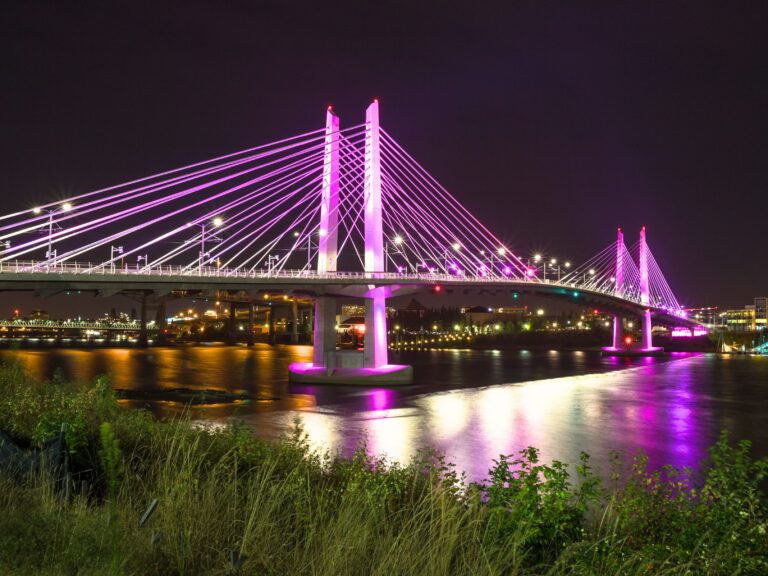
9. Tilikum Crossing
- Opened: 2015
- Type: Cable-stayed bridge
- Neighborhoods/Areas Connected: South Waterfront (Southwest Portland) to Central Eastside Industrial District (Southeast Portland)
- History:
- Named using the Chinook word for “people” or “relatives,” Tilikum Crossing is unique as it is dedicated to transit, cyclists, and pedestrians, excluding private cars. Its LED lighting system enhances its visual appeal and symbolizes Portland’s progressive transportation planning.

10. Sellwood Bridge
- Opened: 1925 (rebuilt in 2016)
- Type: Deck arch bridge
- Neighborhoods/Areas Connected: Sellwood-Moreland (Southeast Portland) to Southwest Portland
- History:
- The original Sellwood Bridge, one of the oldest in Portland, was replaced due to structural concerns. The new bridge maintains the historic aesthetic while offering improved safety and capacity, serving as a vital link between Southeast and Southwest Portland.